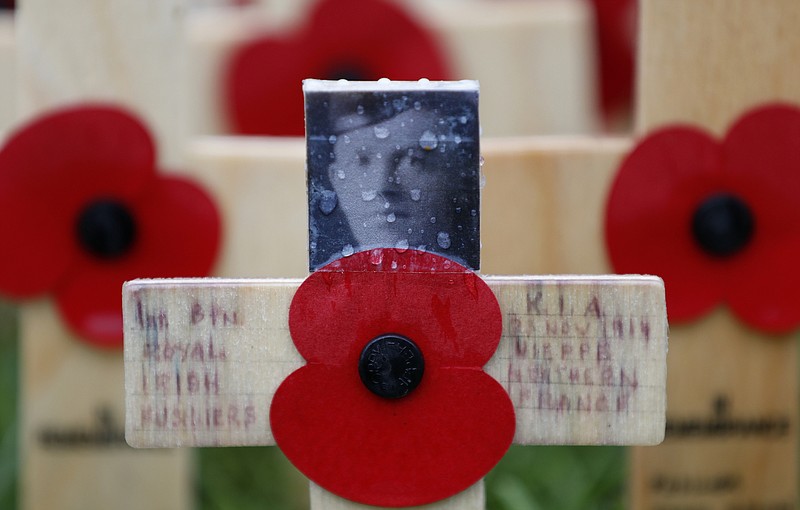Fighting on the Western Front in Europe ceased at 11 a.m. on Nov. 11, 1918, with the signing of an armistice - a truce - between Germany and the Western allies. World War I was technically over. Its repercussions would continue, leading 21 years later to an even more devastating war.
British historian John Keegan opens his fine history of the war: "The First World War was a tragic and unnecessary conflict." Diplomacy failed. Ultimatums led to four years of unrelenting carnage.
Twenty million people died as an immediate consequence of the war, split almost evenly between military personnel and civilians. Artillery took the highest toll among armed forces, followed by small arms fire and poison gas. Twenty million soldiers suffered wounds, often permanently disabling. Total military casualties for Russia exceeded 9 million, for France 6.1 million, for the British Empire 3.2 million. Total casualties for Germany, Austria-Hungary, Bulgaria and Turkey exceeded 15 million.
Civilian deaths resulted from starvation, disease, military action and exposure.
The war facilitated the spread of a devastating epidemic of influenza that began in winter 1918 in military bases and would extend worldwide for two more years.
The U.S. was a late entry into World War I. President Woodrow Wilson called for a declaration of war against Germany on April 2, 1917. Congress passed the measure four days later. Fourteen thousand soldiers in the American Expeditionary Force landed in France in June, an advance party of a force that would exceed four million by war's end. U.S. forces plus a tightening, naval blockade broke a stalemate and led to victory by the Western powers. U.S. casualties included 116,000 deaths, of which half were due to disease, 200,000 wounded, and 4,500 missing.
My firsthand accounts of the war came from a great uncle, a Georgia physician who enlisted in the British Army in 1916. One late evening, he spoke for the first and only time of his experiences in a hospital close to the frontlines. A chlorine gas attack led to many casualties who suffered severe respiratory distress for which little could be done. He attributed a lifelong, cough to gas exposure.
 View our 21 Veteran Salute page
View our 21 Veteran Salute pageOther accounts came from World War I veterans whom I encountered at the Nashville VA Medical Center during my house-staff training in the 1960s. They were in their 60s and 70s at the time of our conversations. A retired farmer continued to suffer from chronic bronchitis which he attributed to exposure to poison gas. Another retired farmer recalled a mixture of fear and excitement as his Army unit marched through Manhattan to board ships that would take them to France. He recalled freezing weather that persisted for weeks as the troops marched from one site to another.
France marks Armistice Day as a national holiday with closure of banks, government offices, and most businesses. It is commemorated as Remembrance Day in the United Kingdom on the Sunday closest to Nov. 11. The commemoration honors servicemen and women who died in service from World War I to the present.
Initially a legal holiday to honor veterans of World War I, our Armistice Day was retitled "Veterans Day" in a 1954 proclamation of President Eisenhower to honor all who have served in our armed forces.
On March 4, 1921, Congress approved the entombment at Arlington Cemetery of an unidentified American soldier killed in World War I. The tomb bears the inscription: "Here rests in honored glory an American soldier known only to God." That sacred site is a reminder of service and sacrifice by all members of our Army, Navy, Air Force, Marines and Coast Guard. Their continuing dedication to the nation's defense secures the peace and prosperity, which we too often take for granted. They must not be used as political pawns or demeaned by such terms as "boots on the ground."
For further reading: "The First World War" by John Keegan and "The Sleepwalkers: How Europe Went to War in 1914" by Christopher Clark.
Contact Clif Cleaveland at ccleaveland@timesfreepress.com.

